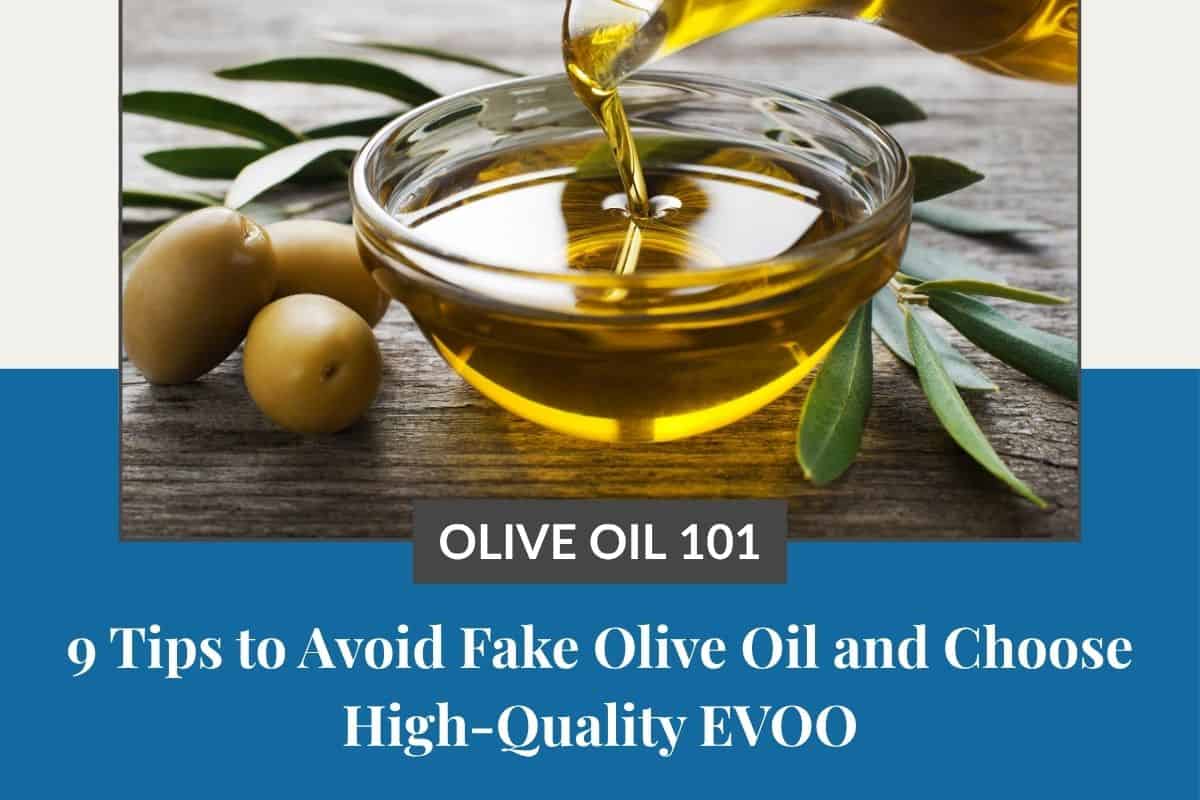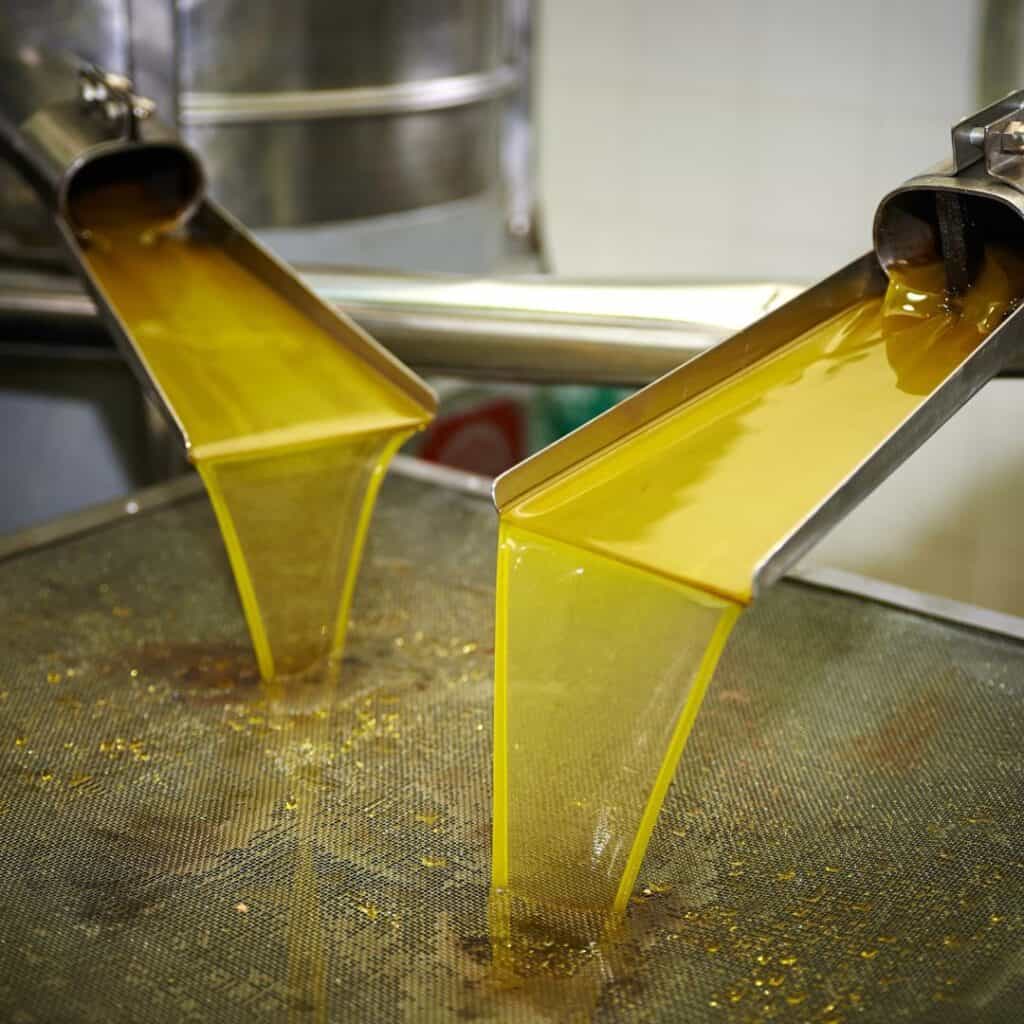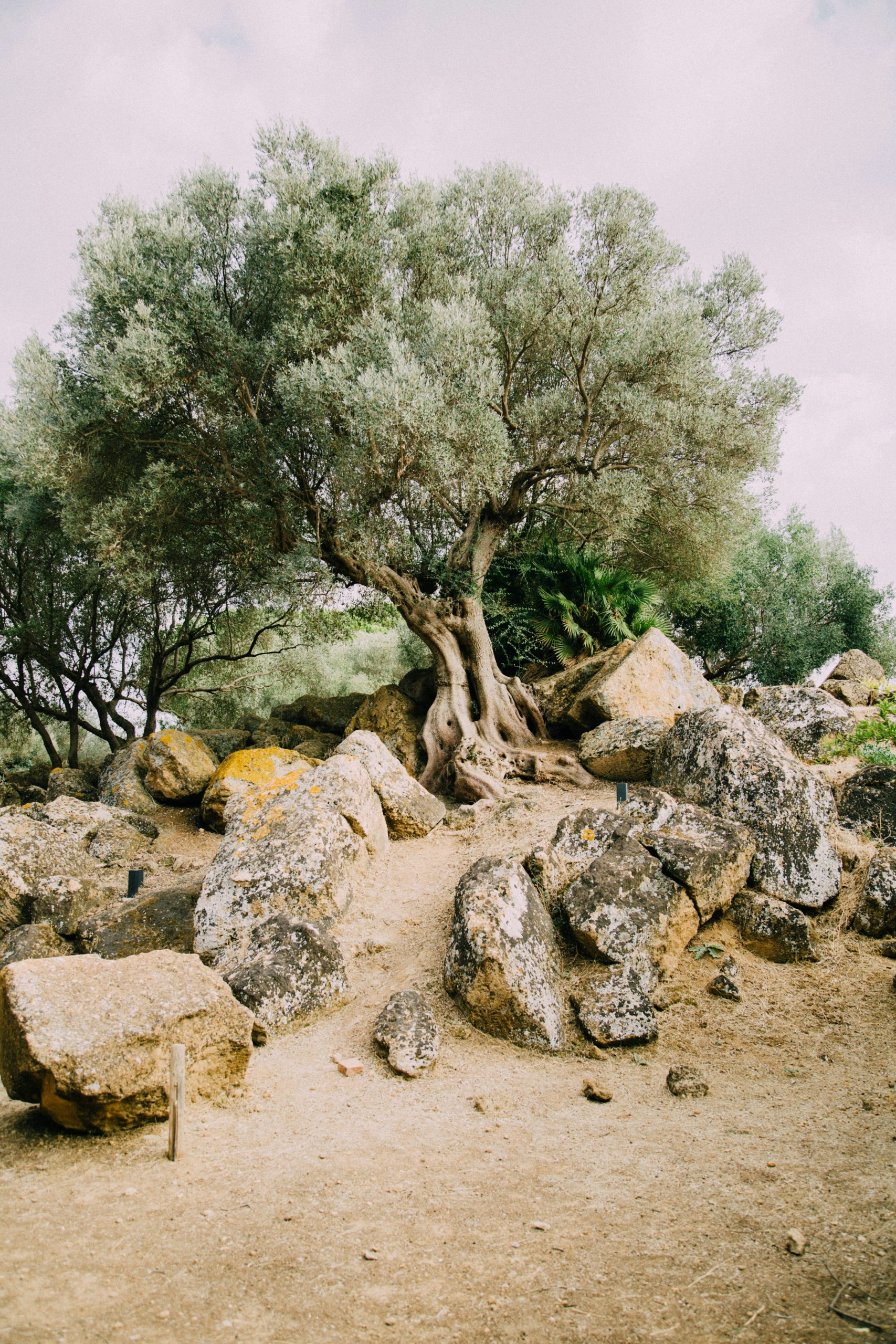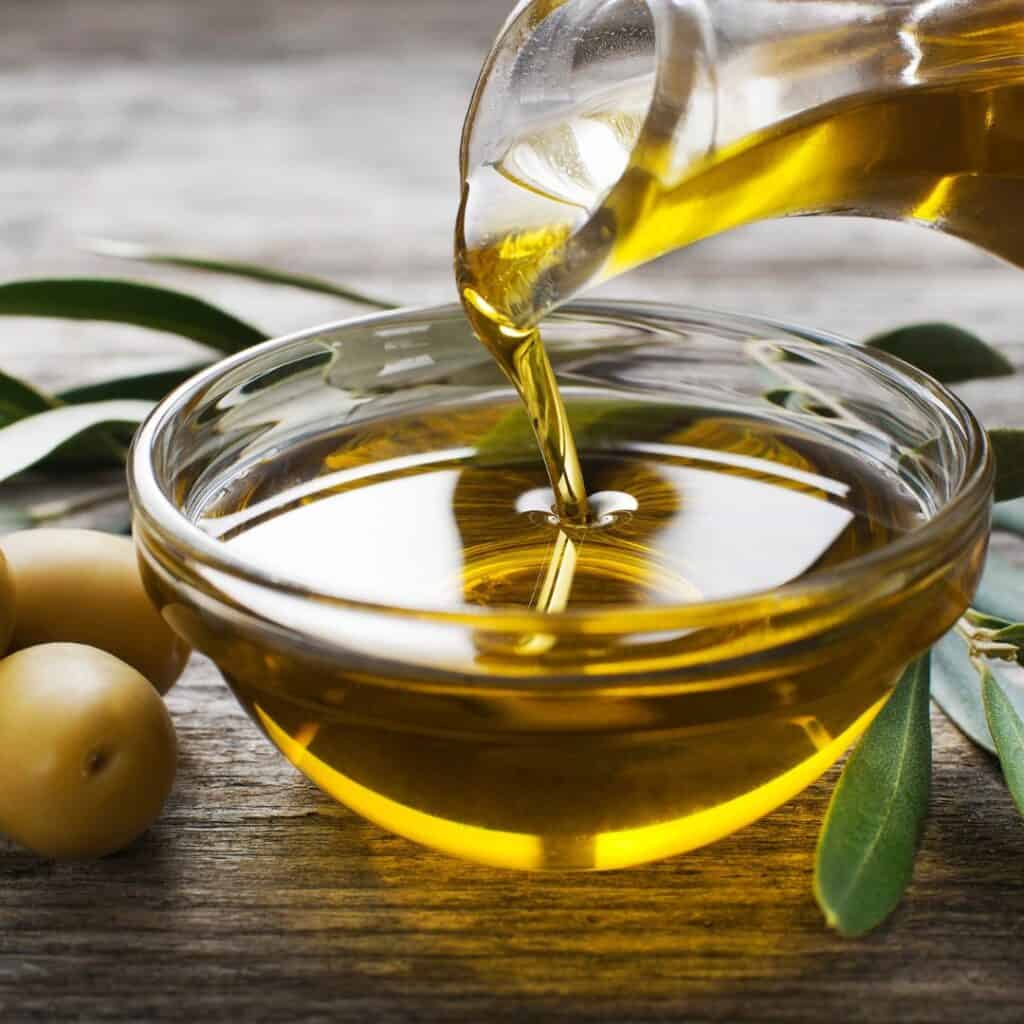
Walk down any grocery aisle and you’ll see shelf after shelf of olive oils claiming to be “extra virgin,” “cold-pressed,” or “light.” But if you’ve ever wondered what actually makes an olive oil high-quality—or whether smoke point really matters—you’re not alone.
Before living in Türkiye, I had never given it much thought. But after spending six years there—surrounded by olive groves and friends who produce their own oil—I learned more than I ever imagined. Experiencing life in a place where olive oil runs through people’s veins completely changed how I buy—and use—it today.
The truth is, not all EVOO is created equal. And relying on marketing labels or price alone won’t get you the best oil. Unfortunately, fake olive oils are becoming more common—but this article will help you avoid them.
Here, we’ll break down exactly what to look for when shopping for extra virgin olive oil—so you can buy with confidence and enjoy the rich flavor and health benefits you’re paying for.
Make sure you get the “Good Stuff”
Not all olive oil is created equal. While a bottle may say “extra virgin,” unfortunately, many oils on the market are anything but. If you want the real deal—flavorful, nutrient-rich, and authentic—here are 9 tips for selecting high-quality EVOO that lives up to its name.
1. Look for a Harvest Date
There is nothing better, regarding olive oil, than opening a fresh bottle and letting the rich smell fill your nose. It’s truly a treat! It is, however, important to pick one with a harvest date within the last 12 months. This will ensure its freshness.
Once you open it, make sure to finish it within 3-6 months to get the most out of it.
Why it matters:
Freshness is key to both the flavor and health benefits of extra virgin olive oil. Over time, its antioxidant content and vibrant flavor degrade.
Tip:
Choose a bottle harvested within the past 12 months. Look for a clear harvest date on the label—not just a “best by” date, which is often based on bottling, not harvest. EVOO is best used within 18 months of harvest, but ideally consumed sooner for maximum quality.

2. Choose Dark Glass or Tin Containers
A darker container helps olive oil last longer by protecting it from oxidation. Tin containers are popular in restaurants, but for individuals or families, they can be a bit cumbersome to handle. We prefer dark glass bottles.
If you store your oil in a dark cabinet where light doesn’t regularly reach it, it will last even longer.
Unfortunately, microplastics are showing up in more and more places—sometimes even in the water used to irrigate olive trees. As these microplastics become increasingly pervasive, it’s even more important to avoid storing oil in plastic bottles, which can leach harmful compounds into the oil, even if they’re labeled BPA-free.
Why it matters:
Light is one of the main enemies of olive oil. Exposure accelerates oxidation, causing your oil to go rancid more quickly. Microplastics, meanwhile, have been linked to various health issues and hormone disruption.
Tip:
Avoid clear plastic or clear glass bottles, which offer little protection. Instead, look for oils packaged in dark-tinted glass or opaque tins.
3. Buy from Trusted Sources
We’re seeing fraudulent practices become increasingly common around the world—in many industries, including food and drink. That’s why it’s so important to know where your olive oil comes from. There should always be clear traceability.
Companies that are selling fake olive oil will be vague with information, contain blends from different countries, or use words like “light” when really they mean refined by heat.
At Elysian, we work closely with farmers and processing facilities to keep the supply chain as short and transparent as possible.
Why it matters:
The olive oil industry has faced repeated scandals over mislabeling, dilution with lower-grade oils, and deceptive marketing.
Tip:
Buy directly from producers, local farmers’ markets, or specialty shops that focus on high-quality, traceable oils. Reputable brands are transparent about where and how their oil is produced. If you can’t trace the source, think twice.
4. Check the Country or Region of Origin
Did you know that olive trees are native to the Mediterranean? While they can grow in other regions, the Mediterranean basin is still home to the highest-quality olive oils in the world.
Soil, climate, and tradition all play a role in shaping the flavor and quality of the final product. A good bottle should clearly indicate where the olives were grown and pressed, not just where it was bottled.
Many brands highlight a country’s name on the label, but when you look closer, you may find the oil was merely packaged there. Sometimes it’s even a blend from multiple countries.
At Elysian Olive Co., our olive oil will always come exclusively from Türkiye.
Why it matters:
Like wine, high-quality olive oil is deeply tied to its terroir. Certain regions are known for producing exceptional olives because of their climate, soil, and time-honored techniques.
Tip:
Look for single-origin or single-source oils from countries known for excellence, such as Türkiye. Even better, choose oils that specify the estate or village of origin.

5. Read the Label Carefully
It’s easy to assume that if a label says “extra virgin,” that’s all you need to know—but unfortunately, that’s not the case.
The olive oil industry is full of vague or misleading labels, and many oils don’t meet the standards they claim. Learning to read a label like a pro can help you avoid disappointment and ensure you’re getting what you paid for.
What to look for:
- “Extra Virgin Olive Oil” – The highest grade with no chemical processing. It also means the free fatty acid content is less than 0.8%.
- “Cold-pressed” or “First cold-pressed” – Indicates quality extraction without heat.
- Harvest date and estate name – Signs of an artisanal, traceable product.
- Certifications (PDO, PGI, Organic, etc.) – Not required, but they can offer extra assurance of quality. Keep in mind, these certifications aren’t always easy to obtain in every country.
Avoid labels that say only “olive oil,” “light olive oil,” or “pure olive oil.” These are refined and lack the nutritional benefits of true EVOO.
Why it matters:
Marketing terms like “pure,” “light,” or “natural” aren’t regulated in the same way “extra virgin” is—and even “extra virgin” can be misused. A well-labeled bottle signals transparency and quality.
Tip:
Choose bottles that list a harvest date, specific olive varietal, and estate or region name. Bonus points for certifications like PDO, PGI, or USDA Organic. Avoid vague terms and opt for brands that tell you exactly what’s inside—and where it came from.
6. Don’t Be Fooled by Price Alone
Even with honest labeling, price can still be misleading—so let’s talk about cost next.
We often associate price with quality—but when it comes to olive oil, that’s not always the case. While you don’t need to spend a fortune, very low prices are usually a red flag for fake olive oil. High-quality EVOO takes time, care, and proper handling—and that naturally comes with a cost.
In small villages, harvesting is a communal effort. Olives are hand-picked, and only the best make it to the press. Larger producers, on the other hand, rely on machines that sweep everything up—ripe or not.
Why it matters:
A higher price doesn’t always guarantee quality, but ultra-cheap oils are almost always refined, low-grade, or fraudulently labeled.
Tip:
Expect to pay a bit more for genuine, high-quality EVOO. Think of it as an investment in both flavor and health. That said, always weigh price alongside packaging, labeling, and origin.
7. Use Your Senses
Of course, the proof is in the pudding, as they say.
Your nose and tongue are your best tools when evaluating olive oil. A good EVOO will smell and taste vibrant, while a poor one might smell stale or taste flat. Don’t be afraid to give it a good sniff and taste—just like wine, olive oil has a personality.
I remember the first time I tried olive oil from my friend’s farm in Türkiye. I wanted to drink it—it was that good. You’ll know it’s a quality oil the moment you taste it. And if it’s high in polyphenols, you’ll feel that peppery sensation in the back of your throat.
What to expect from good EVOO:
- Smell: Fresh olive oil should have a clean aroma—like fresh-cut grass, green apple, or tomato leaf.
- Taste: Peppery, slightly bitter, buttery, or fruity notes are normal and even desirable. A little throat tickle? That’s a good sign—hello, antioxidants.
- Bad signs: If the oil smells musty, metallic, rancid, or greasy, it’s likely gone bad or was never high-quality to begin with.
Why it matters:
The sensory experience tells you more than any label ever could. A fake oil often tastes greasy or flat, while a true extra virgin olive oil feels alive—bright, fresh, and full of character. After all, it’s olive juice. Fresh is always better.
Tip:
Whenever possible, taste before buying, especially at farmers’ markets or specialty shops. Trust your senses

8. Smaller Bottles Are Better
Buying in bulk may seem practical, but olive oil doesn’t improve with age once opened. Unless you’re using it daily, opt for smaller bottles that you can finish while the oil is still at peak quality.
Why it matters:
Once opened, olive oil starts oxidizing with exposure to air, light, and heat. Larger bottles may sit on the shelf too long, especially in smaller households.
Tip:
Buy in quantities you’ll use within 1–2 months after opening. Store it in a cool, dark place away from the stove or windows to help prolong its life.
If you need some tips on how to use your olive oil, try this French Onion Soup recipe.
9. Disclose which variety of olives is being used
Have you ever noticed that some bottles mention specific olive varieties—like Arbequina, Koroneiki, or Memecik—while others don’t? That’s because the variety influences both the taste and nutritional profile of the oil. Producers who share this information are typically more transparent and committed to quality.
Sometimes, though, it isn’t that simple. In Türkiye, for instance, olive trees have been around for centuries, and groves often contain a natural mix of varieties. Even so, these oils can still be considered single-source if they come from one region or grove.
Why it matters:
Certain olive varieties are prized for their flavor, antioxidant levels, or stability. Brands that disclose the olive varietal (e.g., Memecik, Arbequina, Koroneiki) tend to be more transparent and quality-focused.
Tip:
Look for oils that clearly list the olive cultivar used. If it’s a blend, reputable producers will often share which varieties are included—and why. This kind of intentional blending is a good thing.
The Importance of Avoiding Fake Olive Oils
Authentic olive oil isn’t just about great taste—it’s about nourishment, too. Real EVOOs are packed with antioxidants, anti-inflammatory compounds, and heart-healthy fats that support your body from the inside out. These natural nutrients can help lower bad cholesterol, protect your heart, and even fight inflammation.
But here’s the thing: those benefits only come from the real deal. Fake or highly processed oils often lose the very compounds that make olive oil so powerful.
When olive oil is blended with cheaper varieties or overly refined (aka fake oil), it may look the same, but it no longer delivers the same health benefits or rich, vibrant flavor as true extra virgin olive oil.
Why Authenticity Matters
The rise of counterfeit olive oil isn’t just a consumer issue—it’s a problem that affects everyone along the way. When fake olive oils flood the market, they erode trust and make it harder for honest producers to thrive.
Small farmers who pour their hearts into crafting quality oils often can’t compete with the artificially low prices of mass-produced, diluted blends.
Choosing authentic olive oil is about more than flavor or health; it’s about supporting transparency, integrity, and craftsmanship. It’s also about empowering the people who pour their passion into producing it while allowing you to enjoy the full benefits of their work.
When you buy from trusted producers, you’re helping protect a centuries-old tradition—and ensuring that future generations can continue to experience olive oil the way it was meant to be enjoyed: pure, honest, and alive.
What’s Next?
Okay, so you have avoided the fake olive oil and picked a high-quality one in its place. Now what?
Great olive oil should do more than coat your pan—it should elevate your meals and nourish your body. Whether you’re drizzling it over fresh veggies, finishing a soup, or dipping warm bread, high-quality EVOO makes all the difference.
Let’s take a look at why EVOO is the best oil out there to cook with and how the old “smoke point” beliefs are not actually true.
Spoiler alert: EVOO is actually the most stable and healthiest oil to cook with.
Read the white paper on the smoke point here.
